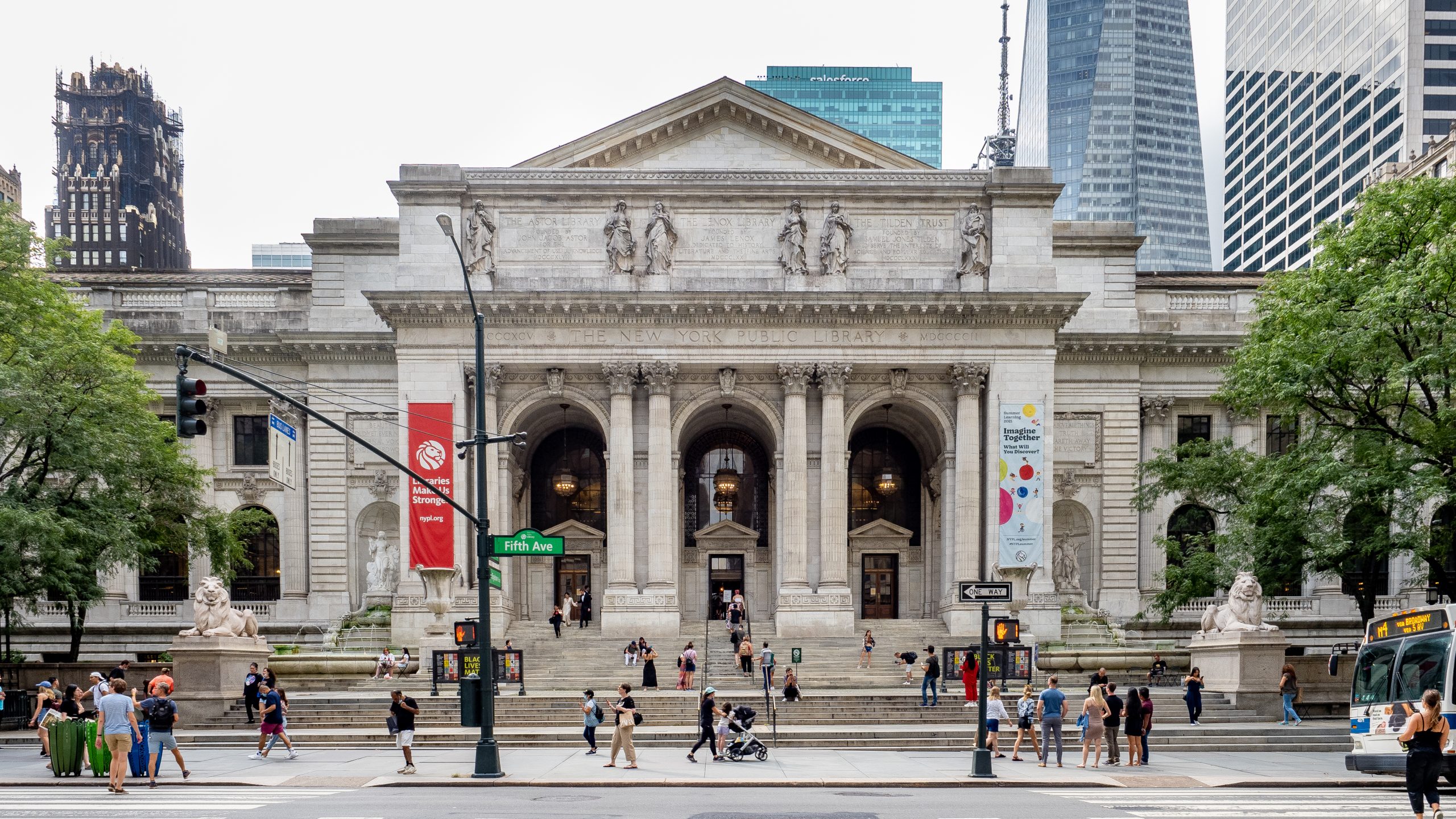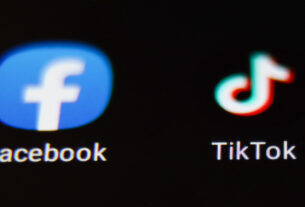(New York Jewish Week) — Jewish New York was once defined by pushcarts and peddlers; immigrants arriving through Ellis Island; densely packed kosher restaurants; lively Yiddish theater and daily newspapers in Yiddish and Ladino.
Those days are long gone — but that period is just some of the Jewish history captured in documents and ephemera collected and carefully cataloged by the Dorot Jewish Division at the New York Public Library. Their collection includes the very first edition, in 1897, of the Yiddish daily newspaper Der Forverts, matchbooks from Jewish businesses like Schapiro’s Kosher Wines, scripts of plays from the Yiddish writer Sholem Asch and photographs of the Lower East Side from more than 100 years ago.
A photograph of street life on the Lower East Side taken by Morris Huberland. (Courtesy Miriam and Ira D. Wallach Division of Art, Prints and Photographs)
For decades, New Yorkers could request to see such items during a visit to the New York Public Library’s main branch.
Now, as part of a belated celebration of the Dorot Jewish Division’s 125th anniversary — which was marked officially in November 2022 — the library has curated and digitized select materials from the division’s archives for a new online exhibit. Now, anyone, anywhere can virtually scroll through thousands of years of Jewish history both local and global, from amulets found in Jewish tombs in Jordan dating to the fifth and sixth centuries to a 1903 guide welcoming new Jewish immigrants to the U.S.
Funded by the David Berg Foundation, the project took about two years to complete, said the curator of the Dorot Jewish collection, Lyudmila Sholokhova. To put the online exhibit together, Sholokhova first had to winnow down the 250,000 items in the Dorot Jewish Division archives to approximately 100 that would represent the highlights of their collection.
“The goal was to reflect the variety of items in our collection … to show the scope of our collection chronologically and also geographically,” Sholokhova told the New York Jewish Week during a recent visit to the library.
“I chose the most visually compelling items that also have a history behind them,” she said. “Of course, I also wanted to pay special attention to the history of Jewish community in the United States and to the history of the division in order to show how the library’s collection was shaped.”
Sholokhova then extensively researched the material, compiling the history and context for each item. “A lot of it was kind of detective work,” she said.
For example: A photo of Yiddish theater superstar Boris Thomashefsky was not labeled. But Sholokhova did some sleuthing and, by cross-referencing scripts that were also in the archives, she was able to determine it was taken during a performance of a Yiddish operetta, “Eretz Yisroel,” which premiered at the Public Theater in New York in 1930.

A 1918 map comparing the Jewish population of New York City (about 1.5 million people) to other places in Europe, the Middle East and South America. (Courtesy Dorot Jewish Division, New York Public Library)
Three of the eight collections of digitized material center on New York and American Jewish history. “The History of the Jewish Division” section includes a photo of Jacob Henry Schiff, the banker and philanthropist who donated $10,000 to the New York Public Library to establish the Jewish division by purchasing “Semitic literature,” as he called it, and hiring a librarian. It also includes an image of that librarian, Abraham Solomon Freidus, along with his application letter.
When the main branch building of the library — today’s Stephen A. Schwarzman Building — opened on Fifth Avenue in 1911, the Jewish Division got its own reading room, which today is used as a study room for the library’s research fellows. A photograph of the room in the 1920s is also included in the archives.
For the “Visualizing Jewish New York” section, Sholokhova worked with the library’s photography division to include 1930s photographs of peddlers on the Lower East Side, the historic Eldridge Street Synagogue and a business selling Rosh Hashanah greeting cards. In the “Building Jewish Life in the United States” section, Sholokhova selected matchbooks, menus, newspapers, plays and maps to document the explosion of American Jewish community and culture in the 19th and 20th centuries.
Support the New York Jewish Week
Our nonprofit newsroom depends on readers like you. Make a donation now to support independent Jewish journalism in New York.

Left: The first edition of the Forverts newspaper, published May 2, 1897. Right: The Ladino newspaper La America’s coverage of the Titantic disaster, published April 19, 1912. (Courtesy Dorot Jewish Division, New York Public Library)
The other sections in the online exhibit are “Beauty and History: The Collection’s Oldest Manuscripts,” “Treasures of Early Jewish Book Printing,” “18th and 19th Centuries: Tradition Meets Modernity,” “The 20th Century: Tragedy and Resilience” and “Jewish Traditions from Around the World.”
Sholokhova, who arrived at the library in 2020 after 16 years at the YIVO Institute for Jewish Research, readily admits it wasn’t easy winnowing down 800 years of Jewish history into a few dozen online images. “It was a really big project,” she said. “It was a real privilege to work with all these people throughout the library.”
In addition to increasing access, Sholokhova explained that another benefit of digitization is that viewers are able to zoom in on the smaller details of any given manuscript, photograph and document. For those in or near New York City, the items are available for viewing in person at the library by appointment. Additionally, a selection of artifacts from the exhibition are on display in the McGraw Rotunda on the third floor at the New York Public Library’s main branch until April 3.




